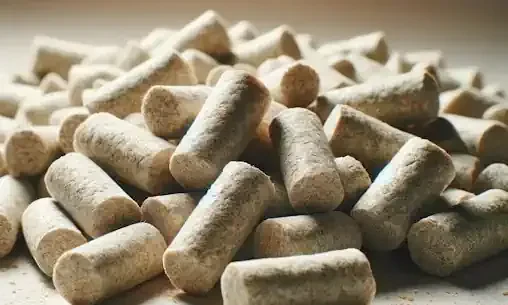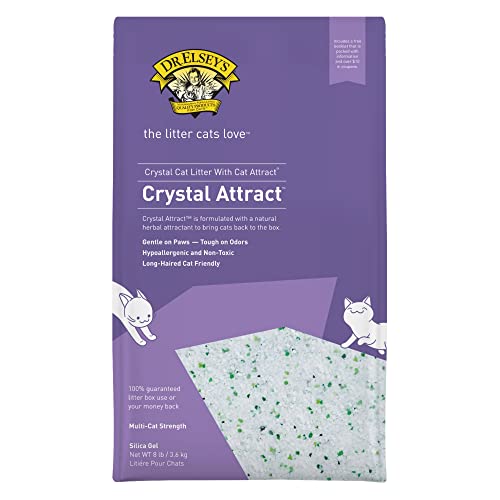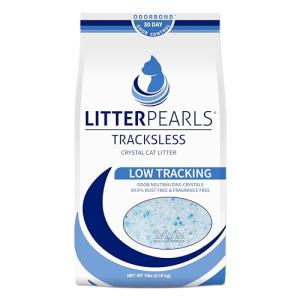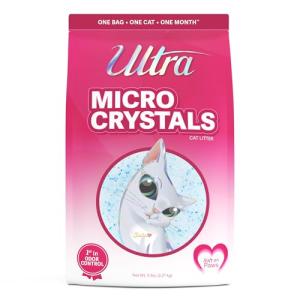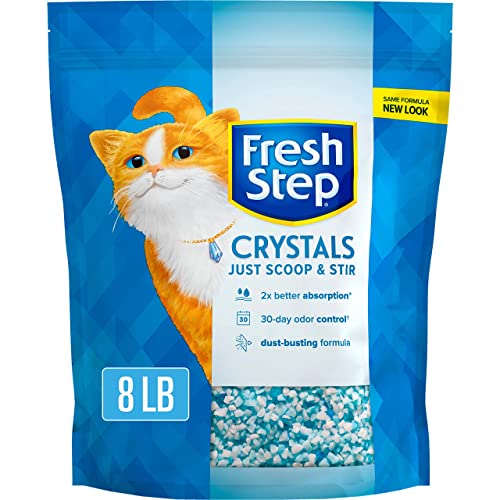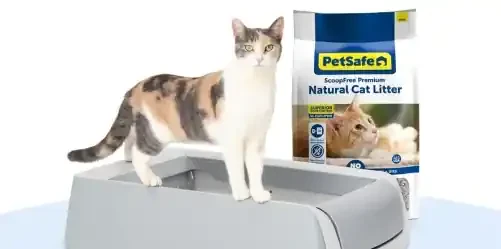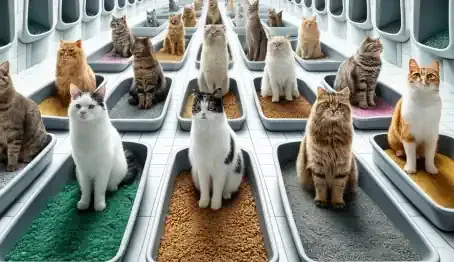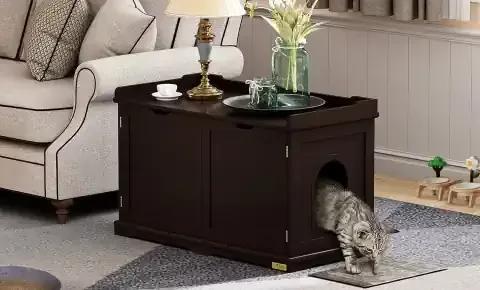Introduction
Brief Overview of the Importance of Cat Litter in Pet Care
Cat litter plays a crucial role in the health and well-being of both cats and their owners. For cats, litter provides a designated area for elimination, fulfilling their natural instincts for cleanliness and territorial marking. Proper litter usage also helps prevent behavioral issues such as inappropriate urination or defecation. For owners, maintaining a clean litter box ensures a hygienic environment, minimizing odor and potential health hazards associated with waste.
Introduction to Cat Litter Pellets as an Alternative to Traditional Clay Litter
In recent years, cat owners have increasingly turned to alternative litter options, seeking products that offer improved performance, sustainability, and convenience. Among these alternatives, cat litter pellets have gained significant attention. Unlike traditional clay litter, which forms clumps when wet, pellets are typically made from materials like wood, paper, or silica gel. These pellets offer unique advantages such as superior absorbency, reduced tracking, and eco-friendliness.
Purpose Statement: Exploring the Benefits, Drawbacks, and Considerations of Using Cat Litter Pellets
This article aims to delve into the world of cat litter pellets, providing cat owners with a comprehensive understanding of their benefits, drawbacks, and important considerations. By examining factors such as absorbency, odor control, environmental impact, and user experience, we seek to empower pet owners to make informed decisions about whether cat litter pellets are the right choice for their feline companions. Through this exploration, we aim to shed light on the potential of cat litter pellets to revolutionize the way we approach litter box maintenance and enhance the lives of both cats and their human caregivers.
Understanding Cat Litter Pellets
Definition and Composition of Cat Litter Pellets
Cat litter pellets are small, typically uniform-sized pieces of material designed to provide a substrate for cats to eliminate waste. These pellets vary in composition, with common materials including compressed wood, recycled paper, silica gel, and other absorbent materials. Unlike traditional clay litter, which clumps when wet, pellets are designed to absorb moisture and control odors through their porous structure.
Evolution of Cat Litter Pellets in the Market
The market for cat litter pellets has evolved significantly over the years in response to consumer demand for more effective, sustainable, and user-friendly litter solutions. Early iterations of cat litter pellets were primarily made from compressed wood or paper, offering an alternative to traditional clay litter. However, advancements in litter technology have led to the development of specialized pellet formulations designed to enhance absorbency, minimize tracking, and improve overall performance.
Different Types of Cat Litter Pellets
Wood Pellets: Made from compressed sawdust or wood fibers, wood pellets are a popular choice among cat owners for their high absorbency and natural odor control properties. These pellets effectively absorb moisture and trap odors, making them an excellent choice for multi-cat households or high-traffic litter boxes.
Paper Pellets: Constructed from recycled paper materials, paper pellets offer a sustainable and eco-friendly litter option. These pellets are lightweight, dust-free, and biodegradable, making them a suitable choice for environmentally-conscious pet owners. While they may not offer the same level of odor control as wood pellets, paper pellets are often preferred for their low tracking and easy cleanup.
Silica Gel Crystals: Silica gel pellets consist of small, absorbent crystals that effectively absorb moisture and lock away odors. These crystals are non-toxic and long-lasting, requiring less frequent litter box changes compared to traditional litter types. Silica gel pellets are also known for their low dust and tracking, making them a convenient option for busy pet owners.
Clay-Based Pellets: Some cat litter pellets are made from clay materials similar to traditional clumping litter. These pellets are designed to absorb moisture and form solid clumps for easy scooping. While they offer effective odor control and absorbency, clay-based pellets may be heavier and more prone to tracking compared to other pellet types.
Overall, the diverse range of cat litter pellets available in the market provides cat owners with ample options to choose from based on their preferences, cat's needs, and environmental considerations.
Advantages of Cat Litter Pellets
Absorbency and Odor Control Capabilities
Cat litter pellets offer superior absorbency and odor control capabilities compared to traditional clay litter. The porous structure of pellets allows for efficient absorption of moisture, preventing puddling and reducing the likelihood of unpleasant odors. Additionally, many pellet formulations are infused with natural odor-neutralizing agents, such as baking soda or activated charcoal, further enhancing their odor control properties. This results in a fresher, more hygienic litter box environment for both cats and their owners.
Environmental Benefits Compared to Traditional Clay Litter
One significant advantage of cat litter pellets is their environmental sustainability compared to traditional clay litter. Many pellet varieties are made from renewable and biodegradable materials, such as wood or recycled paper, reducing reliance on non-renewable resources. Additionally, these materials often have a lower carbon footprint and require less energy to produce than clay litter, making them a more eco-friendly choice for environmentally-conscious pet owners. By opting for cat litter pellets, individuals can reduce their environmental impact while still providing their cats with a safe and effective litter solution.
Reduced Tracking and Dust Compared to Other Litter Types
Cat litter pellets are known for their minimal tracking and dust compared to other litter types, such as clay or clumping litter. The larger size and weight of pellets make them less likely to adhere to a cat's paws and be tracked outside of the litter box area. This results in a cleaner living space and less frequent need for sweeping or vacuuming to remove stray litter particles. Additionally, the low dust content of pellets reduces the risk of respiratory irritation for both cats and their owners, making them a safer option for sensitive individuals.
Cost-Effectiveness and Longevity of Use
While cat litter pellets may have a higher upfront cost compared to traditional litter types, they often prove to be more cost-effective in the long run. Due to their superior absorbency and odor control properties, pellets typically require less frequent litter box changes, resulting in savings on litter expenses over time. Additionally, many pellet formulations are designed to last longer than clay or clumping litter, further extending their lifespan and reducing the frequency of litter purchases. By investing in cat litter pellets, pet owners can enjoy both financial savings and improved litter box maintenance efficiency.
Considerations for Choosing Cat Litter Pellets
Cat Preferences and Adaptability to New Litter Types
Before transitioning to cat litter pellets, it's essential to consider your cat's preferences and adaptability to new litter types. Cats can be particular about their litter, and some may resist using pellets initially. Introducing pellets gradually by mixing them with your cat's current litter can help ease the transition. Observing your cat's behavior and receptiveness to the new litter is crucial to ensure their comfort and acceptance.
Allergies and Sensitivities in Cats and Humans
Cat owners should be mindful of potential allergies and sensitivities in both cats and humans when selecting litter pellets. While many pellet formulations are hypoallergenic and low-dust, certain materials or additives may trigger allergic reactions in sensitive individuals. Additionally, some cats may develop skin irritations or respiratory issues when exposed to specific litter ingredients. It's essential to carefully review the ingredients list and monitor your cat's health for any adverse reactions after switching to pellets.
Compatibility with Litter Boxes and Cleaning Routines
Another consideration when choosing cat litter pellets is their compatibility with your existing litter boxes and cleaning routines. Pellets may require different litter box setups or maintenance procedures compared to traditional litter types. Some pellet varieties may not clump like clay litter, necessitating more frequent litter box cleaning or complete litter replacement. Additionally, the size and shape of pellets may affect how well they sift through certain litter box designs or automatic litter systems. Evaluating these factors beforehand can help prevent potential issues and ensure a smooth transition to pellet litter.
Availability and Accessibility in the Market
Availability and accessibility of cat litter pellets may vary depending on your location and local pet supply stores. While pellets are becoming increasingly popular, they may not be as widely stocked as traditional clay litter varieties. Consideration should be given to the availability of your preferred pellet brand or type and whether it can be conveniently obtained when needed. Exploring online retailers and subscription services may provide additional options for sourcing cat litter pellets, ensuring consistent access to your chosen litter solution.
Tips for Using Cat Litter Pellets Effectively
Proper Litter Box Setup and Maintenance
Choose the Right Litter Box: Select a litter box that is spacious enough for your cat to comfortably move around in. Consider the size and shape of the litter box to ensure it accommodates the specific needs of your cat.
Provide Adequate Depth: Fill the litter box with a sufficient layer of cat litter pellets to allow for effective waste absorption. Aim for a depth of 2-3 inches to provide adequate coverage and prevent waste from reaching the bottom of the box.
Regular Cleaning: Scoop the litter box daily to remove solid waste and clumps. Stir the pellets occasionally to redistribute them and promote even absorption. Periodically empty the entire litter box, clean it with mild soap and water, and refill with fresh pellets.
Mixing Pellets with Other Litter Types for Transition
Gradual Transition: If your cat is accustomed to a different litter type, consider gradually introducing cat litter pellets by mixing them with their current litter. Start with a small percentage of pellets mixed in with the existing litter and gradually increase the proportion over time.
Observe Your Cat's Reaction: Monitor your cat's behavior and litter box usage during the transition period. Pay attention to any signs of discomfort or reluctance to use the new litter and adjust the mixture accordingly.
Monitoring Cat Behavior and Litter Usage
Observation: Pay attention to your cat's behavior and body language while using the litter box. Look for signs of discomfort, avoidance, or changes in elimination patterns, which may indicate a need for adjustments to the litter type or litter box setup.
Multiple Litter Boxes: Provide multiple litter boxes in different locations throughout your home to accommodate multi-cat households or cats with territorial preferences. Ensure each litter box is equipped with cat litter pellets and maintained regularly to meet your cat's needs.
Addressing Common Issues like Tracking and Odor Control
Tracking Prevention: Place a litter mat or tray beneath the litter box to catch stray pellets and prevent tracking throughout the house. Regularly sweep or vacuum the area around the litter box to remove any stray pellets or debris.
Odor Control Solutions: Consider using litter box deodorizers or additives specifically designed for cat litter pellets to enhance odor control. Additionally, ensure the litter box is cleaned regularly to prevent the buildup of odor-causing bacteria and maintain a fresh-smelling environment for your cat and home.
Potential Drawbacks and Challenges
Initial Adjustment Period for Cats
Resistance to Change: Cats can be creatures of habit, and some may resist transitioning to cat litter pellets initially. They may exhibit behaviors such as avoiding the litter box or expressing discomfort while using pellets.
Patience and Persistence: It's essential to be patient and provide encouragement during the adjustment period. Gradually introducing pellets and offering positive reinforcement can help ease your cat's transition to the new litter type.
Limited Availability and Variety Compared to Traditional Litters
Market Constraints: While cat litter pellets are growing in popularity, they may not be as readily available or diverse in options compared to traditional clay litters. This limited availability can restrict choices for cat owners, particularly those seeking specific formulations or brands.
Exploring Alternatives: Cat owners may need to explore different retailers or online suppliers to find their preferred cat litter pellets. Additionally, considering alternative pellet types or brands can help mitigate availability constraints.
Specific Considerations for Multi-Cat Households
Resource Competition: In multi-cat households, competition for litter boxes and resources may arise. Cats may exhibit territorial behaviors or conflicts over litter box usage, leading to stress and potential litter box avoidance.
Multiple Litter Boxes: Providing multiple litter boxes in separate locations can help alleviate resource competition and minimize conflicts among cats. Ensure each litter box is equipped with cat litter pellets and maintained regularly to accommodate the needs of all cats in the household.
Disposal and Environmental Impact of Used Pellets
Waste Management: Proper disposal of used cat litter pellets is essential to minimize environmental impact and ensure proper sanitation. Unlike clumping litters, pellets may not form solid clumps, making waste removal slightly more challenging.
Biodegradability and Eco-Friendliness: While many cat litter pellets are made from biodegradable materials, it's essential to check the disposal instructions and local regulations for proper waste management. Some municipalities may have specific guidelines for disposing of used cat litter, particularly if it contains fecal matter.
Sustainable Practices: Consider exploring eco-friendly disposal options, such as composting or biodegradable waste bags, to minimize the environmental impact of used cat litter pellets. Additionally, supporting brands that prioritize sustainability and ethical sourcing can help reduce the overall environmental footprint of your pet care routine.
Case Studies and User Experiences
Interviews or Testimonials from Cat Owners Using Litter Pellets
User Perspectives: Gathering interviews or testimonials from cat owners who have experience using cat litter pellets can provide valuable insights into their effectiveness and practicality.
Benefits and Challenges: Cat owners can share their experiences regarding the benefits of using litter pellets, such as improved odor control, reduced tracking, and environmental sustainability. They can also discuss any challenges they encountered during the transition period or ongoing use.
Specific Product Feedback: Users can provide feedback on specific brands or types of cat litter pellets they have tried, highlighting features they appreciate or areas for improvement.
Success Stories and Challenges Faced by Cat Owners During Transition
Transitioning Experiences: Cat owners can share their success stories and challenges encountered when transitioning their cats to litter pellets. This can include strategies they used to encourage acceptance of the new litter, as well as any setbacks or obstacles they faced along the way.
Behavioral Observations: Discussing changes in their cats' behavior and litter box habits during the transition period can offer valuable insights into the effectiveness of litter pellets in meeting their cats' needs.
Tips and Recommendations: Sharing tips and recommendations based on personal experiences can help guide other cat owners who are considering making the switch to litter pellets.
Comparison with Other Litter Types Based on User Experiences
Performance Comparison: Cat owners can compare their experiences using litter pellets with other types of cat litter, such as clay, clumping, or natural alternatives. This can include discussions on factors such as odor control, absorbency, tracking, and overall satisfaction.
Preference and Convenience: Users can share their preferences for litter pellets over other litter types based on convenience, ease of use, and maintenance requirements.
Environmental Impact: Comparing the environmental impact of litter pellets with other litter types, including factors such as biodegradability, sustainability, and eco-friendliness, can help cat owners make informed decisions about their choice of litter.
Future Trends and Innovations in Cat Litter Pellets
Ongoing Research and Development in Litter Technology
Advancements in Materials: Continued research and development efforts are likely to lead to innovations in the materials used to manufacture cat litter pellets. This may include the exploration of new, more sustainable materials that offer enhanced absorbency, odor control, and environmental benefits.
Improved Performance: Future developments in litter technology may focus on enhancing the performance and efficacy of cat litter pellets, such as improving moisture absorption rates, clump formation, and odor-neutralizing properties.
Innovative Designs: Manufacturers may also explore innovative designs and features for litter pellets, such as specialized shapes or textures that optimize waste management and litter box maintenance.
Emerging Trends in Sustainable and Eco-Friendly Litter Options
Biodegradable Formulations: There is a growing demand for cat litter pellets made from biodegradable and renewable materials, such as recycled paper, plant-based fibers, or agricultural by-products. Future trends may see an increase in the availability and variety of sustainable litter options that minimize environmental impact.
Minimal Packaging: Eco-conscious consumers are increasingly seeking litter products with minimal packaging and reduced plastic waste. Manufacturers may respond to this trend by offering eco-friendly packaging solutions or bulk purchasing options that reduce the use of single-use plastics.
Carbon Footprint Reduction: As environmental awareness continues to grow, there may be a shift towards cat litter pellets with a lower carbon footprint, achieved through sustainable sourcing practices, energy-efficient production methods, and reduced transportation emissions.
Potential Advancements in Odor Control and Waste Management
Advanced Odor-Neutralizing Technology: Future innovations in cat litter pellets may focus on improving odor control mechanisms, such as incorporating advanced odor-neutralizing agents or antimicrobial additives that effectively combat foul odors and inhibit bacterial growth.
Waste Management Solutions: Manufacturers may explore new approaches to waste management and disposal associated with used cat litter pellets. This could involve the development of biodegradable litter pellets that break down more efficiently in composting systems or innovative recycling programs for used litter materials.
Smart Litter Solutions: With the rise of smart home technology, there is potential for the integration of smart sensors and monitoring devices into cat litter products. These innovations could provide real-time feedback on litter box usage, waste levels, and odor levels, enabling more efficient and proactive litter box maintenance.
Conclusion
Recap of the Benefits and Considerations of Using Cat Litter Pellets
In summary, cat litter pellets offer several benefits for both cats and their owners. They provide superior absorbency and odor control capabilities, reduce tracking and dust, and are often more environmentally friendly than traditional clay litter. However, there are also considerations to keep in mind, such as the initial adjustment period for cats, limited availability compared to traditional litters, and specific considerations for multi-cat households.
Encouragement for Cat Owners to Explore Pellet Options for Their Pets
As cat owners, it's essential to stay informed about the latest developments in litter technology and consider the needs and preferences of our feline companions. While transitioning to cat litter pellets may require patience and experimentation, the potential benefits for both cats and the environment make it worth exploring. By being open to trying new litter options and providing feedback to manufacturers, we can contribute to the ongoing improvement and innovation in cat litter products.
Final Thoughts on the Role of Cat Litter in Pet Care and Environmental Stewardship
Cat litter plays a crucial role in maintaining a clean and hygienic environment for our pets while also minimizing our environmental impact. As responsible pet owners, we have a duty to choose litter options that prioritize both the well-being of our cats and the sustainability of our planet. By opting for eco-friendly litter solutions like cat litter pellets and adopting responsible waste management practices, we can contribute to a healthier and more sustainable future for ourselves, our pets, and the environment as a whole.
